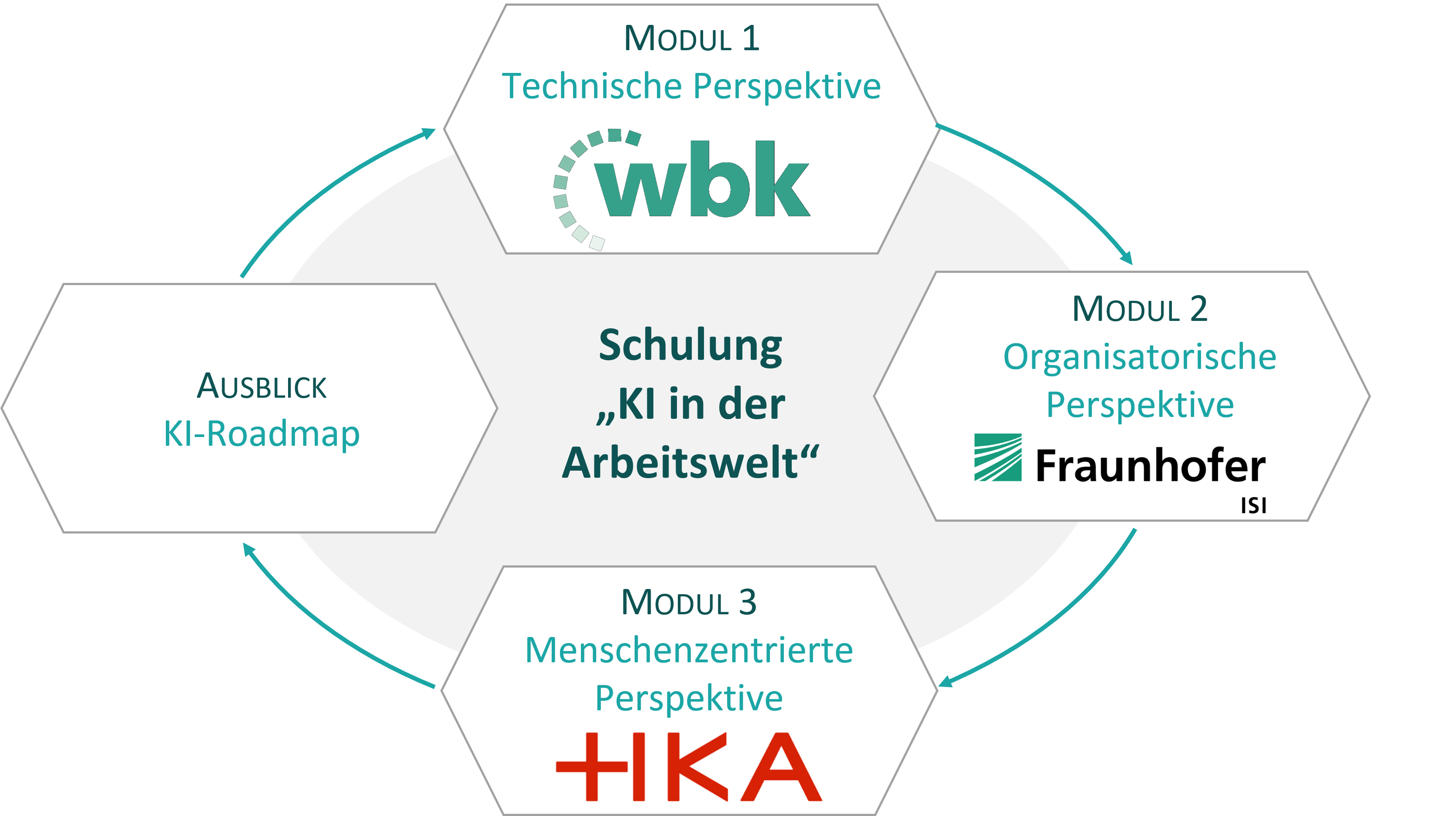AI training course "AI in the world of work"
Target group
Expected result
The training concept basically consists of three modules, each of which addresses different learning objectives:
Module 1: Technical perspective
Learning objective 1: Understand the term "artificial intelligence" and assess when its use makes sense.
Learning objective 2: Understand the relationship between "big data" and "good data" and be able to assess the need for qualitative data.
Learning objective 3: Understand the differences between the various types of AI and know the potentials and challenges.
Learning objective 4: Understanding simple application examples
Module 2: Company perspective
Learning objective 1: Basic understanding of the organizational framework conditions for the introduction and application of AI solutions
Learning objective 2: Ability to independently analyze the readiness of your own company for the introduction and application of AI solutions (AI readiness)
Learning objective 3: Ability to take independent action to ensure the successful implementation of an AI solution.
Module 3: Human-centered perspective
Learning objective 1: Basic understanding of human-centered AI design and AI acceptance in companies
Learning objective 2: Ability to independently identify acceptance-inhibiting factors in the context of the introduction of AI in one's own company
Learning objective 3: Ability to take independent measures to ensure an acceptance-promoting and human-centered AI introduction.
General conditions
Operating instructions

Contact person
marco.baumgartner@h-ka.de
Dr. Djerdj Horvat | Fraunhofer ISI
djerdj.horvat@isi.fraunhofer.de
Magnus Kandler | KIT wbk
magnus.kandler@kit.edu
Format
To the offer
AI training course "AI in the world of work"

Target group
Expected result
The training concept basically consists of three modules, each of which addresses different learning objectives:
Module 1: Technical perspective
Learning objective 1: Understand the term "artificial intelligence" and assess when its use makes sense.
Learning objective 2: Understand the relationship between "big data" and "good data" and be able to assess the need for qualitative data.
Learning objective 3: Understand the differences between the various types of AI and know the potentials and challenges.
Learning objective 4: Understanding simple application examples
Module 2: Company perspective
Learning objective 1: Basic understanding of the organizational framework conditions for the introduction and application of AI solutions
Learning objective 2: Ability to independently analyze the readiness of your own company for the introduction and application of AI solutions (AI readiness)
Learning objective 3: Ability to take independent action to ensure the successful implementation of an AI solution.
Module 3: Human-centered perspective
Learning objective 1: Basic understanding of human-centered AI design and AI acceptance in companies
Learning objective 2: Ability to independently identify acceptance-inhibiting factors in the context of the introduction of AI in one's own company
Learning objective 3: Ability to take independent measures to ensure an acceptance-promoting and human-centered AI introduction.
General conditions
Operating instructions
Contact person
marco.baumgartner@h-ka.de
Dr. Djerdj Horvat | Fraunhofer ISI
djerdj.horvat@isi.fraunhofer.de
Magnus Kandler | KIT wbk
magnus.kandler@kit.edu
Format
To the offer
